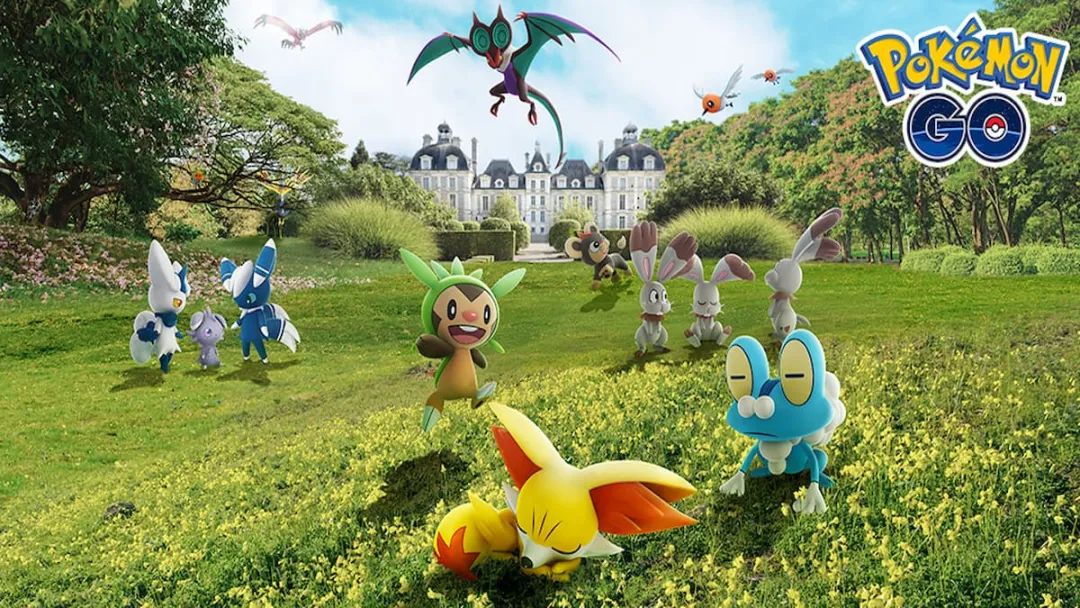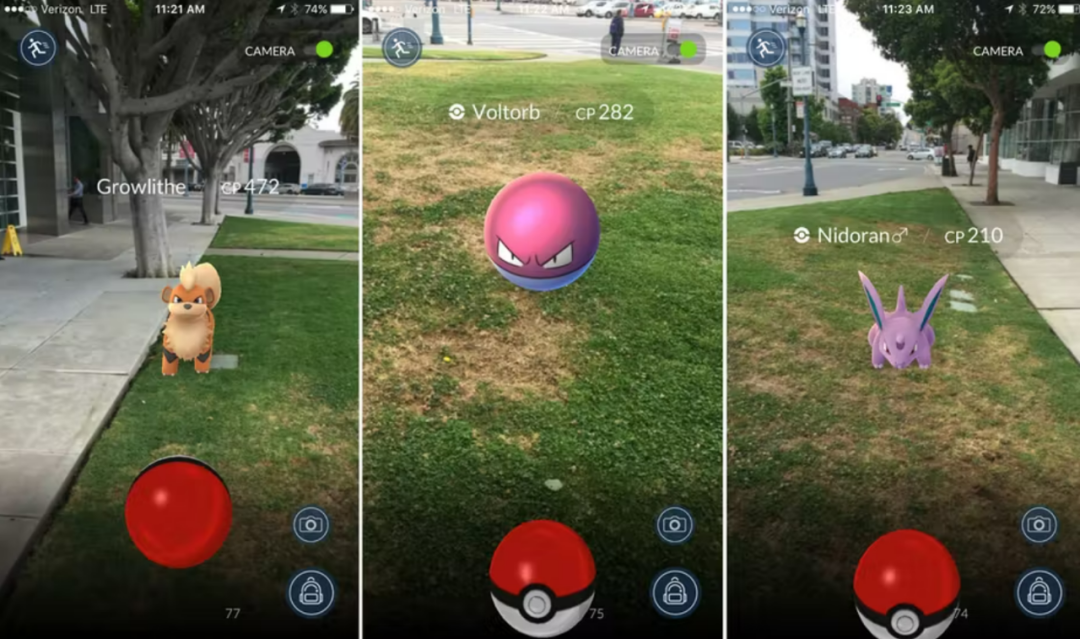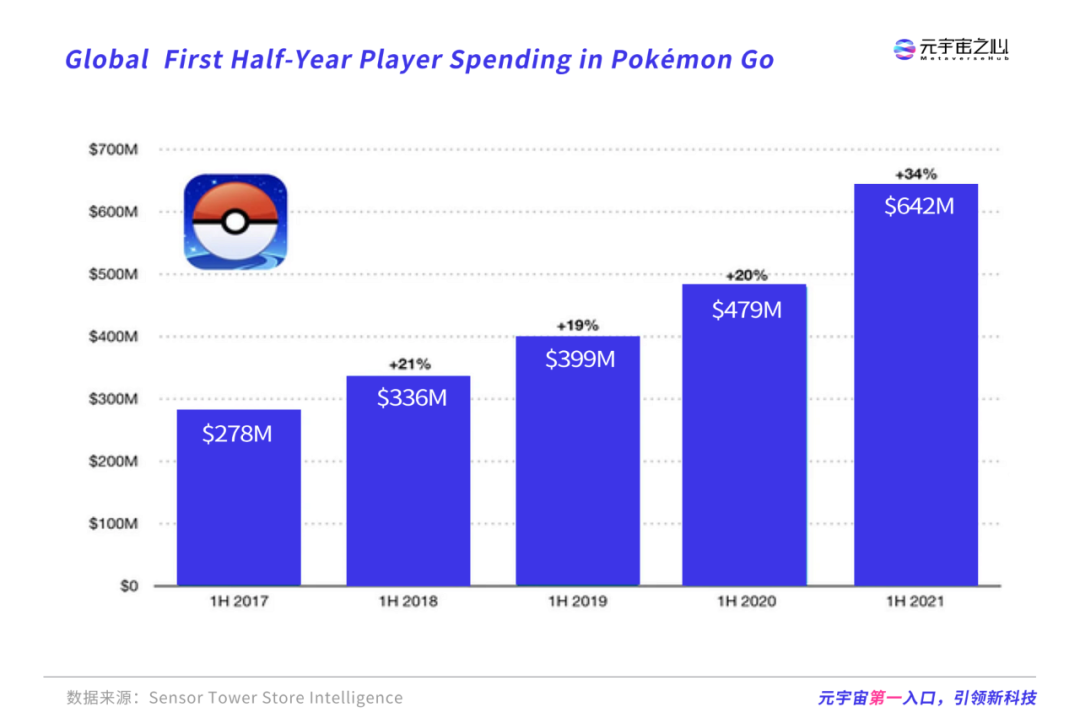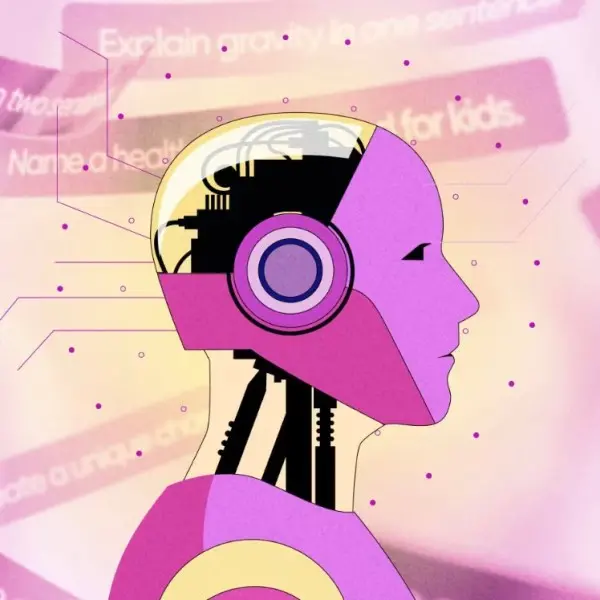Annual revenue of 1.3 billion USD: Analyzing how Niantic, the developer of Pokémon GO valued at 9 billion USD, navigates the metaverse
Author: MetaverseHub
"Pioneers of the Metaverse" is a column we established to focus on the development of the metaverse, primarily aimed at those who are deeply exploring the metaverse industry or "striking gold" in the metaverse, sharing the stories of these companies or entrepreneurs, and offering a unique perspective on those leading the global development of the metaverse. We firmly believe that the curtain on the metaverse has been raised, and the technology internet that will lead the next 20 years has already embarked on the tide of the times. Here is our 16th issue, featuring Niantic, which, just six years after becoming independent from Google, achieved a global revenue scale of $6 billion with "Pokémon GO." Let's explore the charm of the AR game it has created and why Niantic possesses such incredible vitality. Enjoy!
On July 6, 2016, "Pokémon GO" was launched. According to data, the game took less than five hours to claim the top spot in iOS app downloads, and within less than a week, "Pokémon GO" reached 21 million daily active users in the United States, making it the most popular mobile game in U.S. history.
"Pokémon GO" is an AR pet-raising battle RPG mobile game that allows players to explore, capture, battle, and trade Pokémon appearing in the real world. As a result, numerous crazy player incidents such as "stuck in trees," "wandering into minefields," and even "breaking into police stations" have been frequently reported.
Even without looking at the data, one can feel the popularity of "Pokémon GO," and its developer Niantic has gained significant fame as a result. On November 23, 2021, Niantic announced it had secured $300 million in new financing from Coatue, the world's largest tech stock hedge fund, bringing its valuation to $9 billion.
Niantic stated that this new funding would be used to invest in existing games and new applications, serving as an important foundation for building the metaverse.
So, what kind of company is Niantic? How did it manage to grow its valuation to nearly $10 billion in just a few years? This article will guide you to understand Niantic while delving into how the company is laying out its metaverse strategy.
How Did Niantic Come to Be?
The history of Niantic dates back to 2001 when John Hanke and Brian McClendon, fueled by their passion for geospatial technology and applications, founded the digital mapping company Keyhole. Shortly after, in 2004, the company was acquired by Google and renamed Google Earth.
John Hanke and his team continued to explore hundreds of cities, countries, and planets within Google Earth, creating 3D models and launching products such as Google Maps and Street View.
In 2010, John Hanke's team established Niantic Labs within Google to explore LBS AR (LBS, or Location-Based Services, refers to services based on geographic location data).
The initial concept of Niantic Labs was to combine maps with games to provide users with an unprecedented magical experience. However, this idea seemed inconsistent with Google's development direction at the time, leading Niantic Labs to take six months to split from Google and become an independent company in October 2015.
That same year, Niantic formed a tripartite partnership with The Pokémon Company and Nintendo, securing $20 million in Series A funding from them, with investors stating that if Niantic achieved certain goals, the funding amount would increase.
Thus, on February 25, 2016, Niantic received an additional $5 million in Series A funding, with new investors including Alsop Louie Partners, You&MrJones, Fuji TV, and several angel investors.
In July 2016, Niantic officially launched "Pokémon GO," and the subsequent story is as we have seen: in less than six months, the globally popular "Pokémon GO" generated over $1 billion in revenue, becoming the fastest game application to break the $1 billion revenue threshold in history.

Such impressive results attracted many investors in 2017. On November 24, Niantic announced it had secured $200 million in Series B funding, led by Spark Capital, with participation from NetEase, You&Mr Jones Brandtech Ventures, Founders Fund, Meritech Capital Partners, Javelin Ventures, and others. At this point, Niantic's valuation had exceeded $2 billion.
By the end of the same year, Niantic announced a collaboration with Warner Bros Interactive Entertainment and WB Games to jointly develop "Harry Potter: Wizards Unite."
At the same time, Niantic also announced the launch of "Ingress Prime," a revamped version of its LBS AR game debut "Ingress." Both games utilized new technologies to provide players with an immersive gaming experience.
In 2018, "Pokémon GO" surpassed 800 million downloads, and insiders revealed that Niantic was raising a new round of $200 million in funding. However, it wasn't until January 16, 2019, that Niantic announced it had completed a $245 million Series C funding round.
This round was led by venture capital firm IVP, with participation from aXiomatic Gaming, Battery Ventures, Causeway Media Partners, CRV, and Samsung Ventures, bringing Niantic's valuation to approximately $4 billion.
Niantic's most recent funding round was the aforementioned $300 million, which will be used to build a "real-world metaverse." As John Hanke insists, he believes that AR, rather than VR, is the future of the metaverse, and "building a real-world-based metaverse" is his unwavering goal.
What Did "Pokémon GO" Bring to Niantic?
When mentioning Niantic, we cannot overlook "Pokémon GO." "Pokémon GO" is an AR pet-raising battle RPG mobile game co-developed by Nintendo, The Pokémon Company, and Niantic Labs, with Niantic providing AR technology support for the game.
The gameplay is similar to the settings in the Pokémon animation, where players explore and capture Pokémon (a type of creature) and can battle or trade with others' Pokémon, but the standout feature lies in its AR component.
AR, or Augmented Reality, means adding a virtual world on top of the real world to provide more additional information and interaction.
This game turns smartphones into "Pokémon" detectors in real life, using GPS technology to overlay the virtual world where these Pokémon exist onto the real world, allowing players to interact between the real world and the Pokémon's virtual world.
Many settings in the game's virtual world are closely related to the real world. For example, Pokémon are categorized by different attributes, and the locations where each type of Pokémon appears are often closely aligned with real-world locations; for instance, water-type Pokémon are more likely to appear near real-world bodies of water.
Therefore, to capture their desired Pokémon, players voluntarily venture out to explore their surroundings.
With such innovative gameplay and a new way of interaction, combined with the world's largest IP, Pokémon, "Pokémon GO" quickly became a global sensation, achieving record-breaking popularity.

On August 17, 2016, "Pokémon GO" received five Guinness World Records certifications, recognized as "the mobile game with the highest revenue in the first month of launch," "the fastest mobile game to achieve $100 million in revenue (in just 20 days)," "the highest number of downloads in the first month after launch (approximately 130 million)," "the mobile game with the most downloads in the most countries in the first month (over 70 countries)," and "the highest revenue in the most countries in the first month (about 55 countries)."
The unprecedented success of "Pokémon GO" is of great significance to Niantic.
Firstly, the most direct impact is reflected in revenue; Niantic's current income primarily comes from "Pokémon GO," alleviating cash flow concerns in the short term.
Secondly, Niantic has always had a clear vision for the AR industry, and the success of "Pokémon GO" has made Niantic a standout, attracting significant capital interest.
This allows Niantic to have more funds to invest in and incubate startups according to its vision, promote collaborations with large enterprises, and accelerate its layout in the AR industry.
At the same time, "Pokémon GO" has validated Niantic's approach to AR games and expanded LBS technology into a widely accepted solution.
Since Niantic focuses on AR applications, every step is crucial for it, and this success serves as a "booster" affirmation of Niantic's existing development path in AR, marking a milestone significance.
Moreover, the success of "Pokémon GO" has also had a considerable impact on the gaming and AR fields.
"Pokémon GO" has demonstrated the immense potential of LBS AR games and brought a new way of thinking, attracting a large number of developers and companies to explore this novel game type. Some companies holding well-known IPs are actively exploring and launching LBS AR games such as "Jurassic World Live," "Ghostbusters World," "Minecraft AR," and "The Witcher: Monster Slayer."
For Niantic, the success of "Pokémon GO" is just a foundation; Niantic will have more directions to explore in the AR field. With a large user base, "Pokémon GO" undoubtedly serves as the best testing ground. We will continue to watch how far Niantic will explore.
How is Niantic Targeting the Metaverse?
The metaverse is a broad concept, primarily referring to a virtual world that can interact with the real world. Such a virtual world can either be a fully simulated VR world or an AR world that combines with the real world. Therefore, AR games naturally belong to the metaverse direction, even though the metaverse had not yet "caught fire" before.
However, everyone has a slightly different definition of the metaverse, and different tech giants have their unique insights into it. Compared to Meta, which supports a VR-centric understanding of the metaverse, Niantic's CEO John Hanke holds a distinctly opposing view.
He wrote in his blog that he hopes Niantic can inspire everyone to "get up, go outside, and connect with others and the world," rather than pursuing a virtual digital world, even though it can provide so-called exploration, socialization, and virtual space functionalities. He believes technology should serve humanity, not the other way around.

In fact, he is more optimistic about a real-world metaverse built on AR, which can encourage people to go outdoors, explore their surroundings, and reconnect with others. In the future he envisions, the virtual world can directly overlay the real world, enhancing the characteristics of both.
Taking "Pokémon GO" as an example, the virtual world in the game does not occupy people's attention in the real world; instead, it encourages people to interact more in the real world.
In this process, players gain not just Pokémon but may also meet like-minded friends and open up; or they may exercise and experience more scenery.
From this perspective, it indeed "enhances" reality. The popularity of "Pokémon GO" undoubtedly proves the immense potential of an AR version of the metaverse.
However, to achieve John Hanke's vision for an AR version of the metaverse, it cannot rely solely on one game; Niantic is well aware of this issue.
Niantic understands that from a technical standpoint, the relationship between hardware capabilities and software applications is very deep; typically, mature hardware and a user base must be established before application content and scenarios can rapidly develop. Therefore, Niantic's layout for the future development of AR focuses on both hardware and software.
In terms of hardware, Niantic announced at the end of 2019 that it would collaborate with Qualcomm to launch new AR smart glasses, which will use Qualcomm's Snapdragon XR2 chip designed specifically for VR/AR, combining Qualcomm's XR2 hardware and software with Niantic's platform to support world-class scale AR games for millions of users online simultaneously.
Currently, prototypes of the AR glasses are being tested, featuring high brightness and a wide field of view, suitable for outdoor scenarios.
On the software side, Niantic's own game studio is continuously launching new AR games, but more importantly, Niantic has launched a free and open AR development platform called Niantic Lightship.
This platform consolidates Niantic's years of experience and data in AR application development, allowing developers to access APIs, tutorials, operational methods, and other AR game development resources directly from the web. This especially promotes the development of an AR world map, accelerating Niantic's collaboration with third-party developers and the prosperity of the AR application ecosystem.
Currently, Lightship's focus is on attracting more developers to use the platform. To this end, Niantic has established its own creator program and Beyond Reality Fund to attract AR and LBS projects to the Niantic Real World Platform (augmented reality development kit design), helping third-party developers accelerate the development of LBS games.
Based on these two main lines, Niantic has also entered "crazy shopping" mode, continuously investing in or acquiring AR-related companies. For instance, it has acquired AR display manufacturer DigiLens, game short video recording application Lowkey, API solution developer Hoss, 3D scanning application developer Scaniverse, and many game studios.
In terms of the organic combination of hardware and software, Niantic and Qualcomm have defined a true end-to-end architecture, including hardware, software, and cloud technology, hoping to promote the overall development of the AR industry.
Will AR Games Be Another "Golden Track" for the Industry?
Although "Pokémon GO" performed exceptionally well due to its backing from the world's largest IP, Pokémon, this is not the only reason for its success. By closely observing the phenomena triggered by this game, we can better understand the potential of AR games.
Like typical online games, "Pokémon GO" also features many mechanisms that drive players to engage in specific behaviors. However, as an LBS game, it compels players to go outside and visit specific locations, breaking the conventional mindset that online games can be played without leaving home as long as there is internet access.
Games like "Pokémon GO," which combine AR and LBS, seem to merely add a geographical dimension, pulling the game out of the virtual world and binding it to the real world, supplemented by certain incentive mechanisms to enhance gameplay.
However, this small step brings unprecedented advancements to the gaming and AR industries, with limitless possibilities.

Firstly, these AR games create more social possibilities between people. These AR games have many mechanisms that drive people to engage in specific behaviors, invisibly adding new identities and tasks for everyone.
This provides many players with more opportunities or reasons to meet new people. With more social groups, network effects can form, and there are numerous ways to monetize from this, as seen with WeChat's monetization strategies. This is also why tech giants are always eager to engage in social networking.
Secondly, these AR games create more possibilities between people and businesses. Purely through gameplay, players can be driven to engage in specific behaviors at certain locations in the real world.
If the game mechanics of the virtual world are combined with real-world business behaviors, with a little flexibility in thinking, countless cases of virtual and real integration promoting physical commerce can be discovered, which will change many existing marketing methods.
Moreover, and perhaps most importantly, these gameplay mechanics essentially digitize the real world, transforming it and endowing many real-world actions with new meanings and values, creating vast imaginative space.
For individuals, many activities may no longer be dull but rather interesting and meaningful. For example, when we lift weights at the gym, this action in an AR game could transform into "chopping wood," allowing us to exercise while earning digital assets in the virtual world. If these digital assets are based on blockchain technology and become more valuable, it will further motivate us to work out.
For society, AR games will provide us with new identities and goals. Many people may work together in the real world to achieve goals in the virtual world; at the same time, it will quantify our behaviors, bringing new ways of collaboration and profit distribution, and even giving rise to entirely new organizational forms and production relationships, potentially changing the way society operates in the future.
So, how do we understand these limitless possibilities? This brings us back to the metaverse itself.
The English word for the metaverse is Metaverse, which is a combination of "meta" and "verse," meaning "beyond" and "universe," indicating that the metaverse aims to transcend the existing universe. LBS AR games like "Pokémon GO" essentially overlay a virtual world on top of the real Earth.
However, this virtual world does not interfere with the real world, and the production costs are not high. By analogy, in the future, more LBS AR games will be built on the real Earth, each with different settings, perhaps ancient battlefields or magical worlds.
Thus, on a real Earth, countless different virtual worlds can be overlaid, and the metaverse will truly surpass the current universe.
Therefore, there is no doubt that AR games will be a milestone "golden track" for the metaverse.
However, currently, even a success like "Pokémon GO" is merely a tiny grain of sand on this "golden track." This treasure is still relatively unknown, and we will see whether Niantic will become the biggest gold digger in this mine in its future development.
Where is the Next "Pokémon GO"?
Let us retract our infinite beautiful thoughts and focus on the more practical present, pondering where the next "Pokémon GO" might be.
As a highly disruptive product in the AR gaming field over the past few years, "Pokémon GO" continues to attract many players. At the same time, the birth of "Pokémon GO" has also laid the groundwork for the later domestic hits "Let's Catch Monsters" and "Onmyoji." Some may say that "Pokémon GO" is merely a flash in the pan, but in reality, it is quite the opposite.
According to statistics from Sensor Tower in June, since its launch in July 2016, "Pokémon GO" has surpassed $6 billion in total global revenue on the App Store and Google Play, generating approximately $1 billion in revenue each year on average.
This means that even now, "Pokémon GO" remains one of the highest-grossing mobile games in the world. After all, in 2021, it generated $1.3 billion in revenue, ranking seventh in global mobile game revenue. 
This data strongly supports the future development direction of AR games mentioned earlier. As the pioneer of AR games, "Pokémon GO" cleverly combines reality with virtual gaming, revealing some remarkable phenomena.
For instance, in 2017, a robbery occurred in Los Angeles, but two police officers patrolling nearby not only did not rush to the crime scene but drove their patrol car in the opposite direction. The investigation revealed that the two officers were busy trying to catch a Snorlax.
Perhaps the charm of AR games lies in this duality: on one hand, the fun of virtual gaming; on the other, the interaction with the real world, which is fundamentally different from the online games we are familiar with. Therefore, Niantic has been exploring whether it can create the next "Pokémon GO."
In April of this year, Niantic announced its latest original game, "Peridot," which similarly combines classic electronic pet gameplay (more nurturing) with popular LBS technology to create a unique AR scene game.
Although "Peridot" is still in the testing phase, it has already garnered significant attention, and some players have high hopes for it.

On the other hand, about a week ago, Bloomberg reported that Niantic had shut down four game projects and would lay off 85 to 90 employees. This news caused a stir in the industry, especially since it was just a month after they achieved the milestone of $6 billion in game revenue, yet they had already begun what they termed "winter preparations."
However, it is foreseeable that with the operation of the AR development platform Lightship, many AR game development teams will benefit, meaning that some smaller players can experiment with games similar to "Pokémon GO." Perhaps the next AR blockbuster game will not necessarily be born from Niantic's hands.











